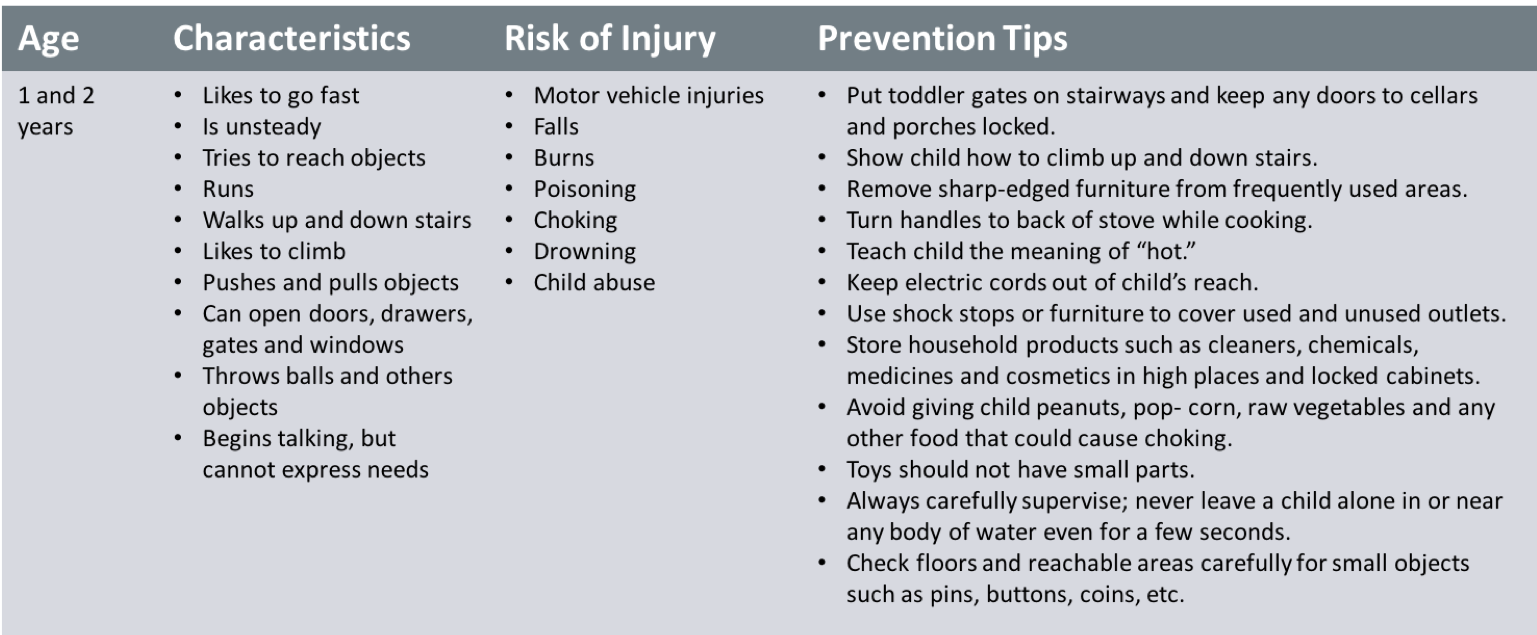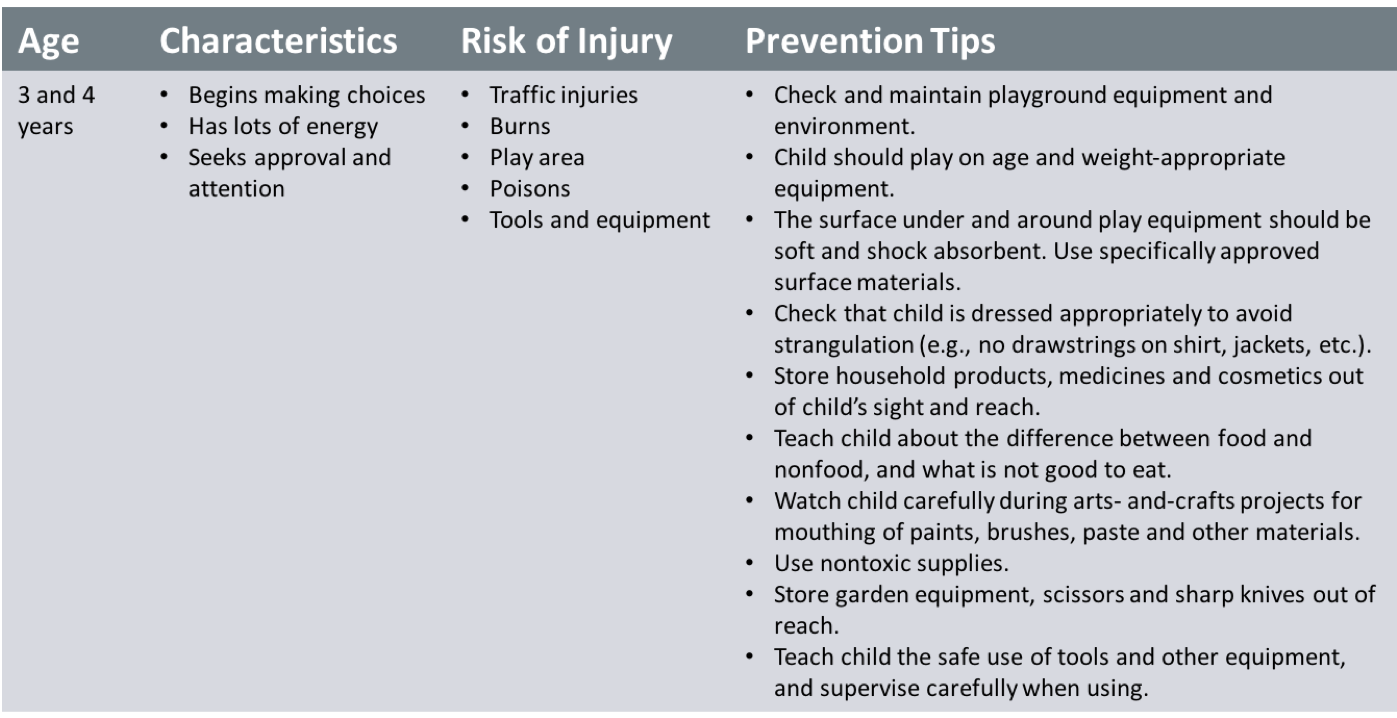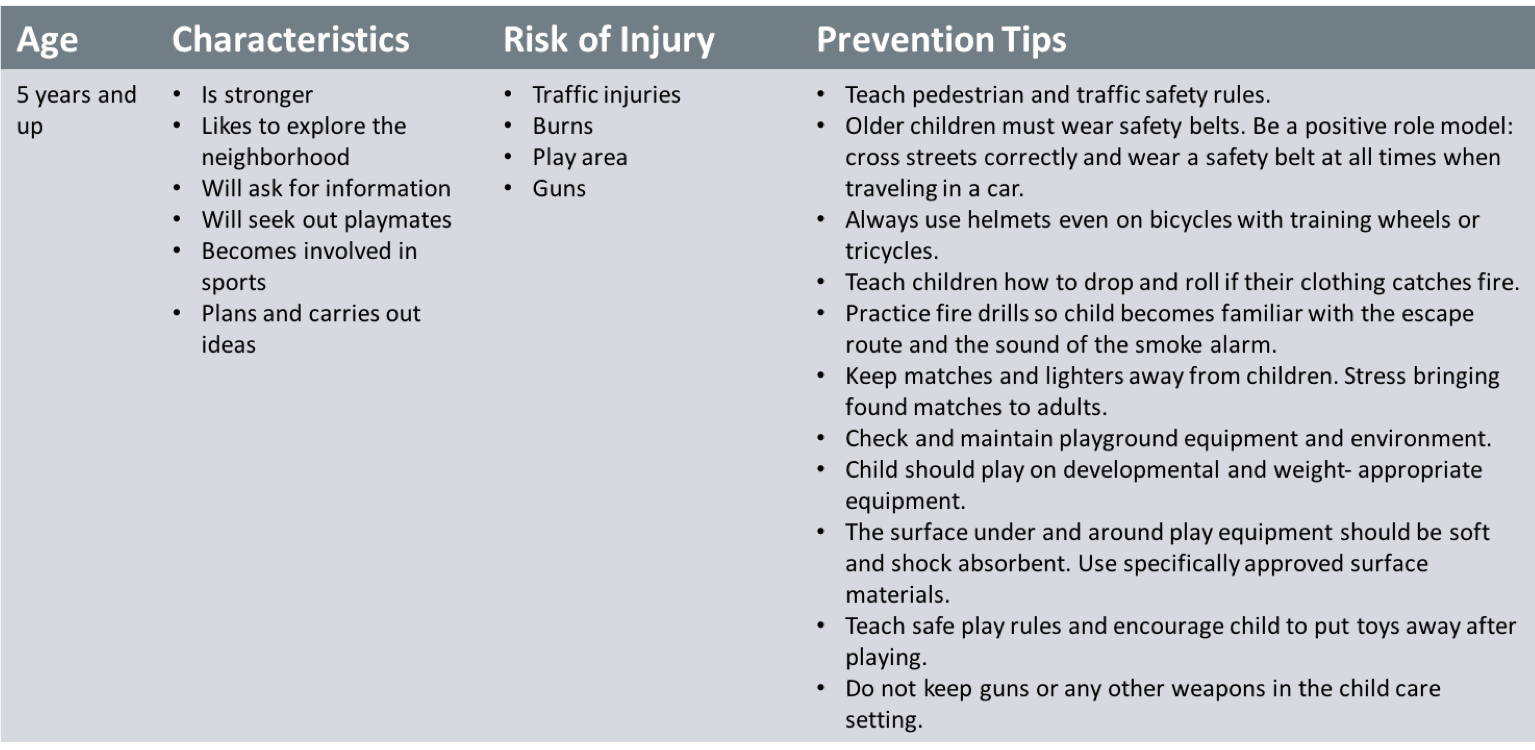Risk of Injury and Stages of Development |
Page 6 |
Children are at risk for injuries because developmental factors limit their physical, mental and emotional abilities. They grow quickly and want to test and master their environment. Their curiosity, fearlessness and lack of safety knowledge put them at risk of attempting actions for which they may lack the skills and physical capabilities. The type of injuries children may incur is related to their development. For example, an infant’s neck is too weak to support the weight of his head, so he will be at risk of serious injury and even death if shaken. Infants and toddlers explore their surroundings by putting objects in their mouths, and therefore are at risk of choking. Toddlers like to walk fast, climb and reach for objects, and therefore are at risk of falling or poisoning. Motor vehicle accidents are the leading cause of injury in all age groups.








